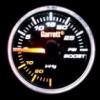-
Latest Postings
-
25
FUEL WARNING MESSAGE
Geoff, did you check the fuel filter that protects the transfer pump from blockages? Tony -
0
Wanting to build my car.
I’ve brought my first car a while ago it’s a 2008 Toyota Aurion sportivo zr6 it has 215xxx kms I’ve been wanting to modify it as it is tidy but I’m unsure if I should since the car is this old and I have had to replace the oil cooler lines a month ago (my car dumped its oil on me) just unsure if they go good after a certain age. what I do want to do to it is. wheels lowering springs or coil overs stiffer sway bar exhaust tint all round after market head lights and tail lights (if any of you know decent ones could you shear a link as I’ve only been able to find some on eBay) if there is anything else that would make it look good like body kits if there are any would be nice to know. Thanks in advance IMG_0918.cr2 -
0
2004 hzj79 surging/jolting
Gday Ive got a problem with my 2004 hzj79 with 235,000kms with no turbo, ive takin it to a few places all have different answers. At 1400rpm just on light throttle it seems to be surging/jolting as if your on and off the accelerator. Ive recently had the head gasket, head, injectors, fuel filters and timming belt all done and is still happening after the works been done. Has anyone else had the same problem before or be able to point me in right direction? Cheers. -
6
Australian customers gullible ?
Not sure if this thread is still active, but It's 2024 and nav is still a problem in my 2018 Prado. I paid for an update, but I haven't noticed any difference, maps are still out of date. I tend to use my phone, but I would prefer to use the existing screen. I think you're right, if enough of us complained or cared, maybe something would be done to improve this problem... we are customers and we paid well for it! Hopefully we are not a dumping ground for old tech! -
0
Gen 6 Cluster Backlighting Issues
Hey guys, I'm having issues with the gauge cluster backlighting keep blowing fuses every time I turn on my lights. I have tried cleaning connections, replaced the lights and even removed the dimmer switch. Has anyone come across this issue at all? -
1
-
2
Windows wont work after Jump start
Easy fix, OPEN your window, then CLOSE the window ( This time Continue to HOLD the switch UP for a further 10-15 sec ) Then reopen the window and once again continue to HOLD THE SWITCH DOWN for a further 10-15 Seconds, Shut her down, turn IGN back on Window auto function all reset, no probs, Leave the money on the fridge Cheers CONROD- 1
-

-
1
Faulty speedo
Remove dash instrument cluster, remove speedo, and check the inner spindle drive is not dragging against the magnetic drum that moves the speedo needle to show your speed. While you're at it withdraw the INNER cable from the speedo cable using a pointy pair of pliers and coat it with vasaline and reinstall. if it still plays up the speedo drive is stuffed -
1
2012 Hilux 3.0 D4D starts, runs for 30 seconds then stops
Also, I have pulled an injector and fuel is coming out of it...so whilst i am not sure how much pressure is there, diesel is being fed up to the injectors...so the problem i think is electronic in that the injectors are not pulsing. Now i know that the injector pulse controller is working because the car has been started and ran for up to 30 seconds on a number of occasions I have disconnected the MAFS, cleaned out the MAF but it doesnt make any difference. It appears to me that the computer is disabling the injection system for some reason. -
1
2012 Hilux 3.0 D4D starts, runs for 30 seconds then stops
hi guys, my son drowned his Hilux in 4 feet of water a week ago. (note car has a snorkel) I stripped out the alternator, starter motor, PCM and Turbo Wastegate controller, drained oil, removed filter and replaced, as well as went around the lower part of the engine disconnecting and learning electrical connectors. I went through both fuse boxes (one under hood, second fuse box underneath steering wheel, and also disconnected cleaned and reconnected plugs all around the inside of the cab. We charged up the battery, gave the engine a 720 degree hand crank with a socket on the harmonic balancer to ensure it wasn't hydro locked pulled the exhaust immediately after the turbo to check no water had come up the bum and into the turbo removed and checked airbox and flexible turbo intake piping checked there was no water ingress through the intercooler After all of the above, we hit that start key and she fired up immediately. I then immediately shut it off to check a few connectors and see if any error codes were registering still on the ODB port...I cleared them. Thats when all the trouble began... The car wouldn't start after this. We removed battery and put it back on charge and left it for the night. Next day, installed battery, turned the key...she fired up immediately. 30 seconds later it shutdown again...then refused to start. I removed battery, left it for an hour whilst mucking around with a few connectors and cleaning...plugged in battery again and voila....started back up again. Ran for about 30 seconds then shutdown refusing to restart again. Its the exact same thing over and over again. The ODB reader gives at least 2 error codes consistently 1. Barometric pressure in the manifold error 2. Turbo wastgate low voltage (I obtained another turbo wastegate controller however this had made no difference to the turbo error code) I am not convinced that the turbo or the barometric pressure are necessarily what is causing it to shutdown. Is it possible that water has somehow gotten into something related to the factory ignition disable system and is causing this? Ideas?
-





Recommended Posts
Join the conversation
You can post now and register later. If you have an account, sign in now to post with your account.